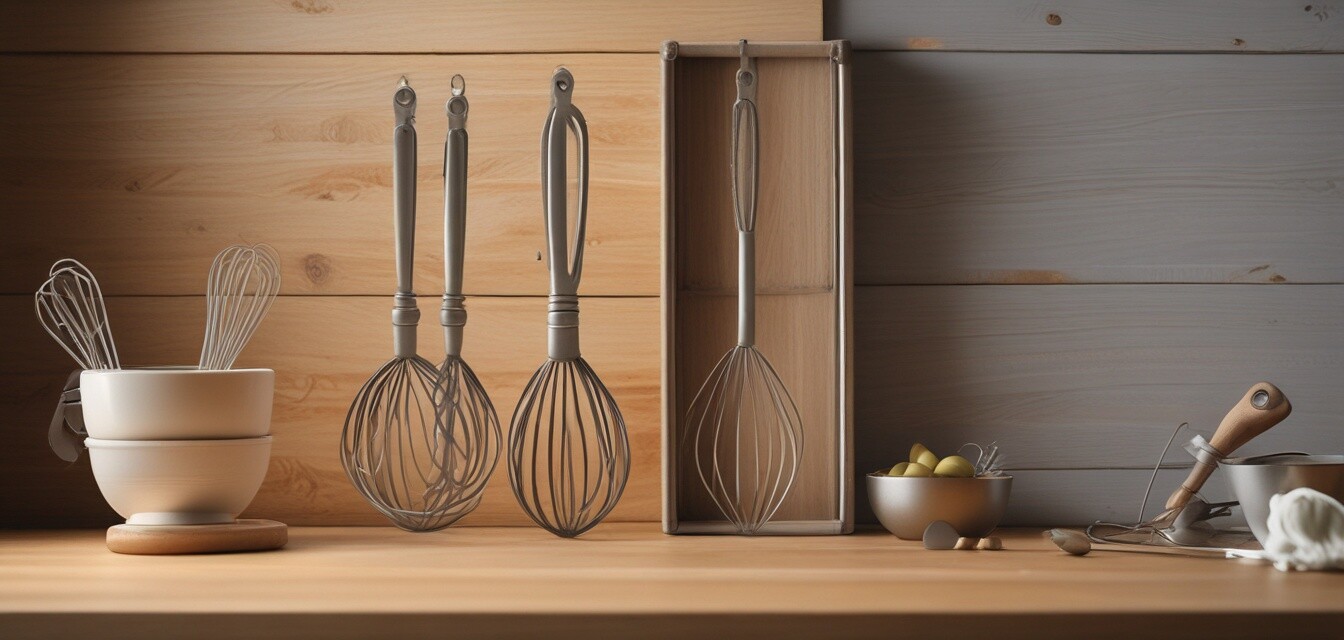
Choosing the right whisk for your kitchen
- Whisks come in various shapes and sizes, designed for specific tasks.
- Understanding the purpose of each whisk type can enhance your cooking experience.
- Choosing the right whisk can improve texture and consistency in your dishes.
Whisks are essential tools in any kitchen, enabling you to create a variety of textures and consistencies in your culinary creations. Whether you're whipping cream, beating eggs, or mixing batter, having the right whisk can make all the difference. In this article, we’ll explore the different types of whisks available, their specific uses, and how to choose the best whisk for your kitchen needs.
Types of whisks
Whisks vary in design, size, and material, each serving a unique purpose. Below is a breakdown of some of the most common types of whisks found in kitchens around the world:
| Type of Whisk | Best Use | Material |
|---|---|---|
| Balloon whisk | Whipping cream, beating eggs | Stainless steel, silicone |
| Flat whisk | Mixing sauces, gravies | Metal, silicone |
| Spiral whisk | Whisking thicker mixtures, such as doughs | Metal, silicone |
| French whisk | General mixing, emulsifying | Metal, nylon |
| Electric whisk | Quick blending, whipping, and mixing | Electric |
Choosing the right whisk
When selecting a whisk, consider the following factors to ensure you find the best fit for your cooking style and needs:
- Purpose: Decide what you will use the whisk for most often.
- Material: Look for durable materials that suit your cookware, as some may scratch non-stick surfaces.
- Size: Consider how much you typically prepare; larger bowls may require a bigger whisk.
- Comfort: Ensure the handle feels comfortable in your hand for extended use.
Common whisking techniques
Using a whisk properly can enhance your cooking experience immensely. Here are some common techniques:
- Whipping: Use a balloon whisk to incorporate air into mixtures, such as cream or egg whites.
- Mixing: A flat whisk is perfect for combining ingredients in a pan without scraping the bottom.
- Emulsifying: Use a French whisk to blend oils and liquids, ensuring a smooth texture.
Maintaining your whisks
Proper care can prolong the life of your kitchen whisks:
- Hand wash your whisks with warm, soapy water to prevent damage.
- Store them in a drawer or hang them to avoid bending the wires.
Pros
- Versatile for a variety of culinary tasks.
- Easy to clean and maintain.
- Available in a range of designs and materials.
Cons
- Some whisks may not be suitable for thick mixtures.
- Lower quality materials can bend or break.
Conclusion
Selecting the right whisk can significantly enhance your cooking experience. Whether you prefer a balloon whisk for light, airy mixtures or a sturdy flat whisk for sauces, having the right tool at your disposal will empower your culinary adventures. For more insights on various kitchen tools and appliances, check out our other guides in our Cooking Buying Guides.